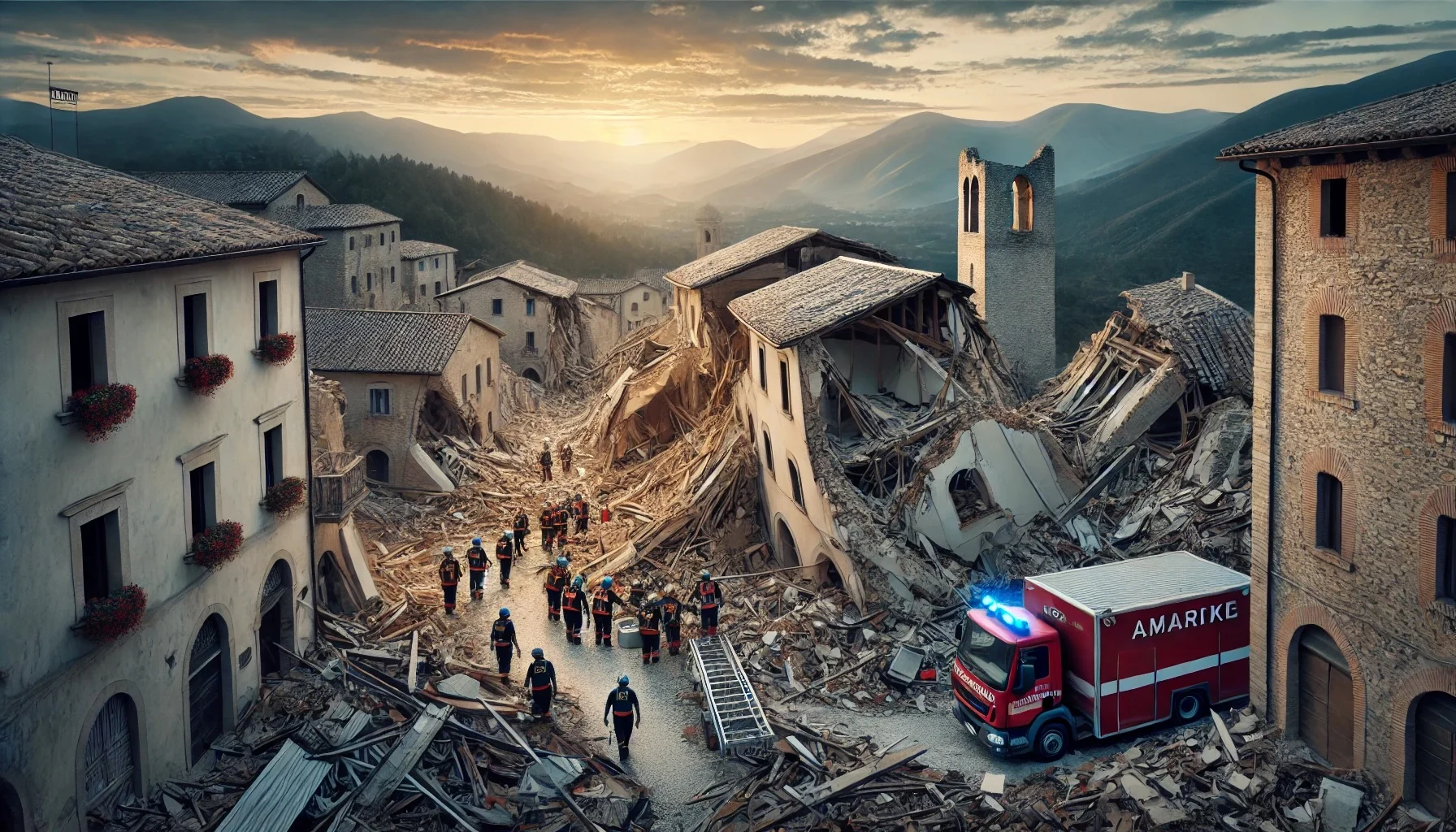
The 2016 Central Italy Earthquake
by: The Calamity Calendar Team
August 24, 2016
The Night the Earth Trembled
In the early hours of August 24, 2016, while most of Central Italy slept, a terrifying rumble shattered the silence. At 3:36 AM, the ground beneath the picturesque towns of Amatrice, Accumoli, and Pescara del Tronto shook with a violent intensity. Measuring 6.2 on the Richter scale, the earthquake struck without warning, turning the quaint, medieval buildings into death traps.
Amatrice, a town known for its beauty and its annual festival celebrating the beloved pasta dish, amatriciana, was among the hardest hit. What was once a bustling hub of life and culture became a scene of unimaginable devastation. Streets that had echoed with the sounds of daily life were now buried under heaps of stone and dust, with the cries of survivors piercing the cold night air.
A Town Lost in Ruins
As dawn broke over the Apennine Mountains, it revealed the full extent of the disaster. The historic town of Amatrice, famous for its centuries-old buildings, had been almost completely destroyed. The clock tower, a symbol of the town, stood frozen at the moment disaster struck, its hands forever marking 3:36 AM. Beneath it lay the remnants of homes, businesses, and the lives that once animated them.
Rescue teams, both local and international, rushed to the scene, sifting through the rubble in search of survivors. For days, they battled against time, fatigue, and the constant threat of aftershocks. One of the most significant aftershocks, registering 5.5, struck just an hour after the initial quake, further complicating rescue efforts and deepening the fear and uncertainty that gripped the region.
The Human Toll
By the time the rescue efforts ended, the death toll had reached 299, with hundreds more injured. The small town of Amatrice bore the brunt of the tragedy, with entire families lost beneath the debris of their homes. In an instant, a tight-knit community was ripped apart, leaving behind a void that no amount of rebuilding could ever truly fill.
One story that resonated deeply was that of the Hotel Roma in Amatrice, a popular spot for tourists and locals alike. The hotel was filled with guests when the earthquake struck. Tragically, many of them did not survive, their bodies discovered days later by rescuers who never gave up hope. This single building became a symbol of the heartbreak that spread throughout the region.
Thanks for subscribing!
The Aftermath and the Long Road to Recovery
The earthquake not only took lives but also shattered livelihoods. The estimated cost of the damage reached €23 billion (around $28.5 billion USD), a staggering sum that reflected the widespread destruction across the affected regions. Historic buildings that had stood for centuries were reduced to rubble, and with them went a piece of Italy's cultural heritage.
For those who survived, the aftermath was a time of sorrow and uncertainty. Thousands were left homeless, their houses reduced to piles of stone. The Italian government declared a state of emergency, swiftly mobilizing resources for relief efforts. Yet, the process of rebuilding was anything but swift. In the remote, mountainous areas hardest hit by the quake, the logistics of reconstruction were daunting.
As emergency shelters were set up, the survivors began the slow, painful process of grieving and rebuilding. The Italian government, along with international aid organizations, promised to restore the towns, but the road to recovery would be long and fraught with challenges. Many faced the difficult decision of whether to stay and rebuild or leave the only homes they had ever known.
A Community’s Unbreakable Spirit
In the years since the earthquake, the people of Amatrice and the surrounding towns have shown remarkable resilience. Despite the slow pace of reconstruction and the ever-present fear of future earthquakes, the community has worked tirelessly to rebuild what was lost. New homes have risen from the ruins, and efforts to restore historic sites continue, though the scars of that tragic morning remain.
The earthquake also sparked a national conversation in Italy about building codes and seismic safety. In a country where ancient architecture is both a treasure and a risk, the need to balance preservation with safety became a pressing issue. The disaster led to stricter regulations aimed at ensuring that future buildings could withstand such powerful tremors, potentially saving lives in the process.
Conclusion
The earthquake that struck Central Italy on August 24, 2016, was a tragedy of immense proportions, leaving a lasting impact on the region and its people. Yet, it also highlighted the strength and resilience of those who survived, who continue to rebuild not just their homes, but their lives. As the clock tower in Amatrice remains frozen at 3:36 AM, it serves as a poignant reminder of the moment everything changed.
Stay in the Loop!
Become a Calamity Insider and get exclusive Calamity Calendar updates delivered straight to your inbox.
Thanks! You're now subscribed.